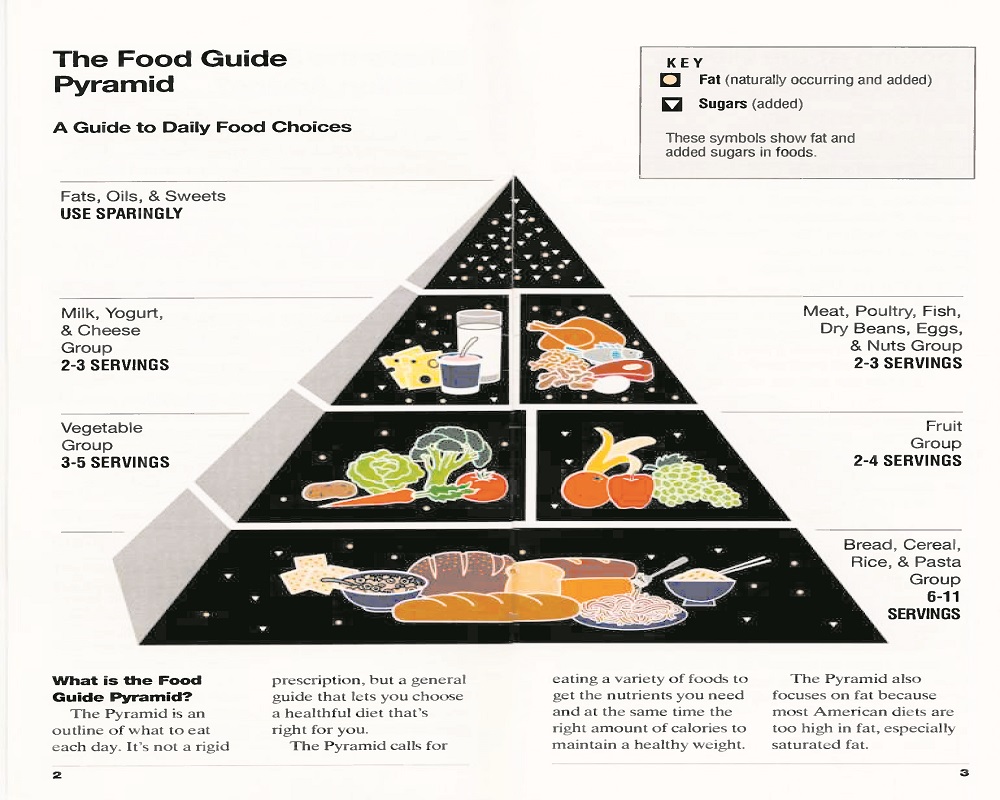It has been more than a decade since the US Department of Agriculture (USDA) toppled its well-known “Food Guide Pyramid” dietary guidelines in favor of the “MyPlate” program. But despite the millions of tax dollars spent promoting MyPlate, most Americans don’t know what it is, and fewer still follow its advice. It turns out, they’re not missing much.
Like the Food Guide Pyramid, MyPlate is meant to distill dietary guidance down to an easy-to-understand visual image—but it doesn’t do that very well. The MyPlate graphic (shown above) features a circular plate divided up into four quadrants labeled “fruits,” “vegetables,” “grains” and “protein”…plus a smaller second circle labeled “dairy,” no doubt meant to represent a glass of milk consumed with the meal on the plate.
While the Food Guide Pyramid (shown at right) made it obvious which categories should form the core of a healthy diet—grains and fruits/vegetables were the largest layers at the pyramid’s base—the relative sizes of the MyPlate categories are tricky to compare. Among MyPlate’s other shortcomings…
Protein problem. The quadrant of the MyPlate graphic that represents meats, poultry, seafood, eggs, meat substitutes and so forth is labeled “protein.” Chefs use the term “proteins” to refer to these foods, but nutritionists don’t because it creates the impression that these are the only sources of protein. In fact, a range of foods contain protein, including grains, fruits and vegetables and dairy foods.
Dairy dodge. The circle labeled “dairy” creates the impression that dairy is a necessary component of a healthy meal—which it isn’t.
Fruit flub. Fruits are given their own quadrant on the MyPlate plate. Fruit certainly has a place in a diet, but shoehorning it into this dinner plate graphic creates the impression that healthy sit-down meals must include fruit. In fact, people usually consume fruit as a snack.
What to do: If you want nutrition guidance, ignore MyPlate and stick with the original Food Guide Pyramid, which was based on years of nutrition research.


